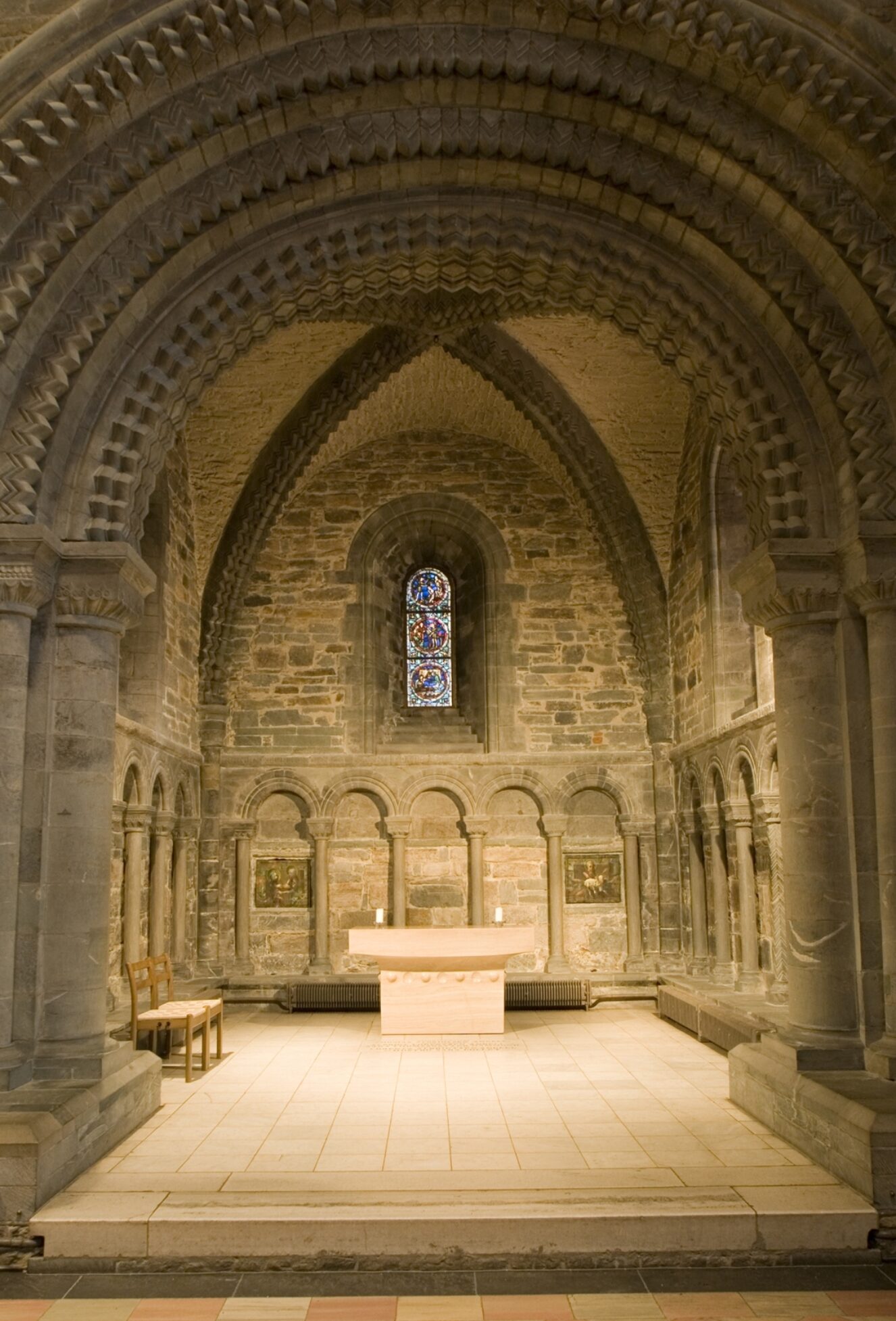St. Olav
Saints were central figures in catholic Europe in the Middle Ages. Sinners and people afflicted by disease could ask for forgiveness and help if they turned to God through the help of a saint.
Olav became one of the most important saints in Scandinavia. Churches dedicated to him were built in Scandinavia, around the Baltic Sea, on the continent and on the British Isles. His grave in a silver shrine at the altar of Nidaros Cathedral became the most important pilgrimage site in Northern Europe, and people from near and far came to the cathedral to pray by the Saint’s grave.


